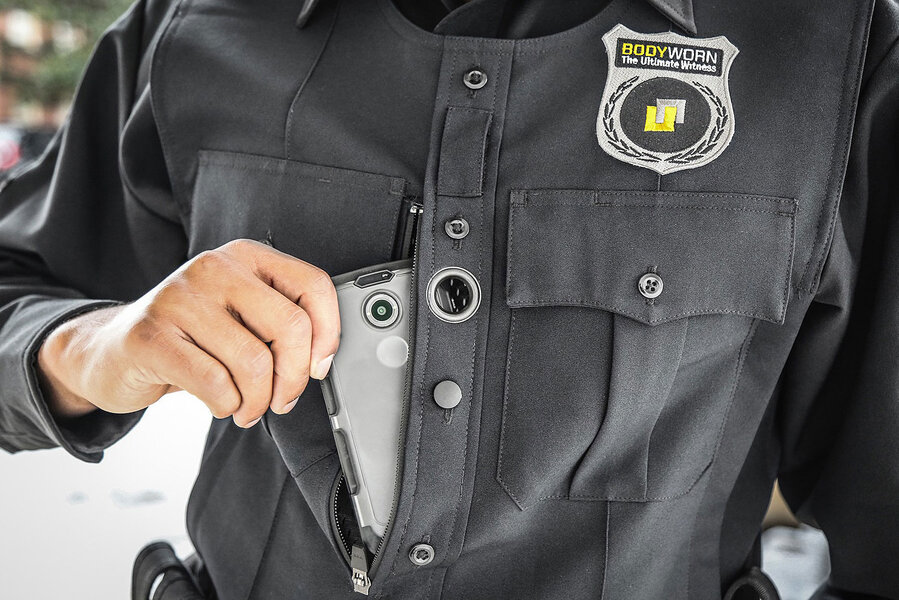Cameras that turn on when the sirens do: Can they help police?
Loading...
The police department in Stuart, Fla., joined their comrades around the country by outfitting every officer with a body camera, a move to improve transparency and trust for the police and public alike.
For now, the officers are required to turn the cameras on before any interaction with a citizen, but the department plans to update soon to technology that will turn the cameras on when the sirens start to blare, Ari Hait reported for WPBF 25 News. Automatic turn-on technology is a possible solution for the otherwise challenging issues of privacy and accountability raised by body cameras.
"I'm trying to train myself where it'll be second nature where I get out of my car and tap it to get it to turn on," Officer Kyle Osinga told WPBF 25 News. "That way, I get used to it."
For officers who patrol on foot or by bike, advancing technology could turn the cameras on at the sound of raised voices. One brand of body camera promises "policy-based recording," that will turn on the camera depending on the department's specifications. Triggers could include the light bar, car door, or shotgun rack, according to the BodyWorn website.
Technology with automatic triggers for body cameras is a significant boost to the movement. Giving officers the option to turn cameras off and on did not reassure those pushing for video-prompted accountability, especially since police in a tense situation, worried for their safety, would likely not redirect their attention to camera switches at a crucial moment. Cameras that film automatically negate these concerns.
There are good reasons for turning the video feature on only when needed, however. Always-on cameras, easily accessed through open-records laws, could enable unscrupulous publishers to post online videos of children, homes, or vulnerable citizens needing help. Although asking officers to switch on the video whenever tension arose on the job was not ideal, requiring officers to wear an always-on camera would make a stressful job that much more difficult, Jay Stanley wrote for the American Civil Liberties Union (ACLU):
Continuous recording would also mean a lot of mass surveillance of citizens’ ordinary activities.... [I]n a place like New York City it would mean unleashing 30,000 camera-equipped officers on the public streets, where an officer on a busy sidewalk might encounter thousands of people an hour. That’s a lot of surveillance. That would be true of many denser urban neighborhoods – and of course, the most heavily policed neighborhoods, poor and minority areas, would be the most surveilled in this way.
Continuous recording would also impinge on police officers when they are sitting in a station house or patrol car shooting the breeze – getting to know each other as humans, discussing precinct politics, etc.
Despite the challenge of balancing these competing values, police departments from Los Angeles to Dallas to Iowa City are embracing the body camera movement not only to improve trust with communities by catching wrongdoing, but also by showing off their best moments.
The Justice Department began issuing funds for police departments to buy and research officer body cameras in 2015, The Christian Science Monitor reported. A report by the President's Task Force on 21st Century Policing issued in March of that year showed the presence of cameras make citizens and officers alike "behave better": A 12-month study with the cameras produced almost 90 percent fewer incidents of force, and a nearly 60 percent decrease in complaints against officers.








